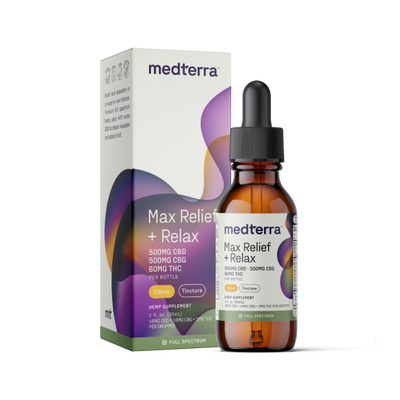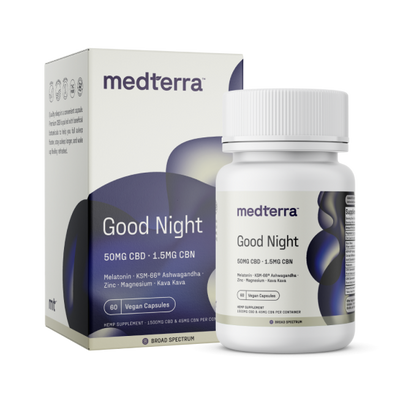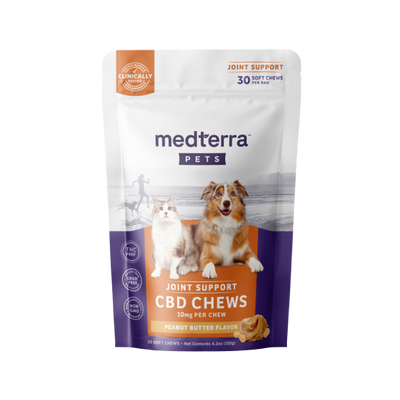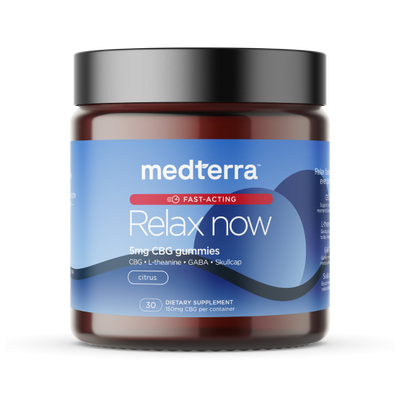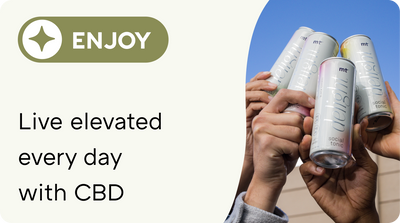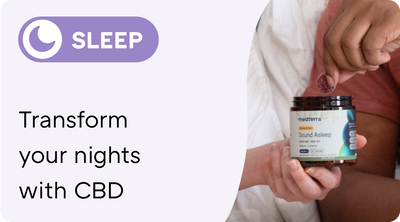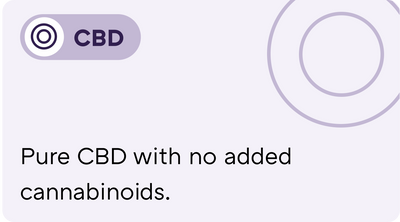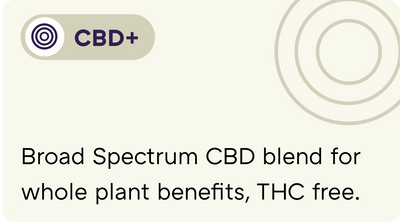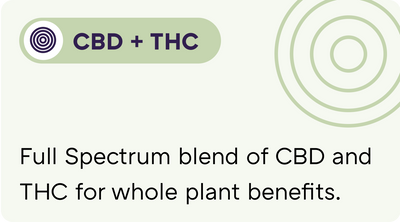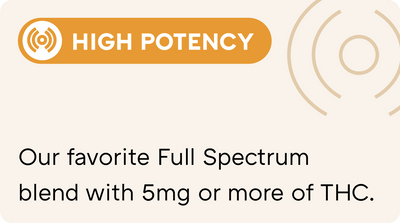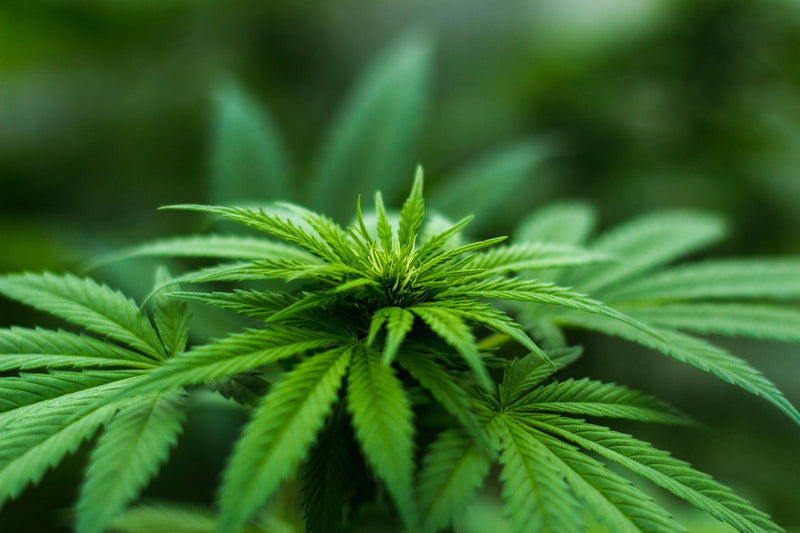Especially, Kentucky Hemp!
Medterra supplies premium hemp-derived CBD products to customers all over the world.
So, why do we source everything from US hemp, instead of keeping things local? Why not supply our Japanese customers with Japan-grown hemp, etc...?
It turns out that US hemp has several advantages over what’s being grown in other areas. Keep reading to learn why.
- America has been growing hemp forever
- Kentucky’s climate = hemp bliss
- Kentucky hemp: the comeback!
- Hemp...industrial, or not?
America has been growing hemp forever
American and hemp go way, way back. Hemp has been grown in America since its founding in 1776, and it’s likely that uncultivated hemp grew throughout the Country for many years before that. French explorer Jacques Cartier documented this scene upon his arrival in North America circa 1540:
“The land groweth full of hempe which groweth of itselfe, which is as good as possibly may be scene, and as strong”
Fast forward to the late 1700’s, and America was brand new, with an equally new economy strengthened by its agriculture and upheld by its farmers. Hemp was integral to this progress, and acknowledged as such a valuable cash crop that its cultivation in some areas was legally mandated. Even George Washington showed full support, famously declaring, “make the most you can of the Indian Hemp seed and sow it everywhere.”
Things began to shift by the 1930’s, however. Conflicts with other big business meant that the entire cannabis family, including hemp, fell victim to smear campaigns and fear tactics.
While hemp’s prohibition was tolerated, it wasn’t exactly taken well. Medical boards protested. Farmers and botanists did, too. Kentucky, which had been growing hemp for as long as the US had been around, was especially hard hit. (More on Kentuckian hemp next.)
Seemingly all of a sudden, the hemp plant and its benefits were forgotten about. Things got even worse with the passing of 1971’s Controlled Substances Act, which rather blindly grouped hemp into the same category as LSD and heroin. [2]
By the ’90s, though, things were finally starting to turn around. The human Endocannabinoid System had just been discovered, giving scientific credence back to the cannabis plant and creating a renewed interest in its cultivation.
Kentucky, once a mecca of hemp growing, began in 1994 to once again look seriously at the plant’s potential. The tide was turning, but it would be several more decades before sweeping legal changes were made. Take a look at the history of hemp in Kentucky and it becomes obvious that this resurgence is only fitting.
Kentucky’s climate = hemp bliss
While hemp has been grown throughout America for hundreds of years, there’s one US region where the plant really shines: Kentucky.
Hemp is Kentucky’s oldest crop. In fact, hemp cultivation transcends the age of Kentucky itself. You’d have to go all the way back to the year 1775 to really get to the bottom of things; that’s when the soon-to-be-State’s first hemp crop was planted. [3]
Indeed, Kentucky’s land has been prized for its farmability since the dawn of America. The first plant to be farmed? Hemp, of course, which was also a favorite cultivar of George Washington and other founding fathers. The area’s rich soil and pleasant weather inspired pioneer John Filson to mention hemp in his 1784 novel “Kentucky and the Adventures of Col. Daniel Boone”. [4]
Soon enough Kentucky was exporting, not importing, hemp and its derivatives to other parts of the Country. The bluegrass region was eventually identified as prime territory for hemp, the best of the best when it came to growing conditions.
Production grew in tandem with Kentucky society through the turn of the 19th century. Thanks to hemp the State’s early settlements evolved into genuinely bustling communities, replete with estates, large homes, and primitive factories.
Before too long early farmers found themselves with a surplus of hemp...so they had to get creative! Hemp-derived rope soon became a thriving industry of its own. Thriving enough for Kentucky senator Henry Clay to champion the cause, at least.
In an 1810 speech Clay pushed the US Navy to use hemp riggings on their ships, a debatable topic that made national news. In retrospect, the senator’s passion for hemp (and its business potential!) can be credited with shaping some of America’s earliest trade and tariff policies.
Fast forward to 1878, when the State’s first industrial-scale hemp processing center was launched by the Kentucky River Mills Company. This company was ingenious enough to harness waterpower in the production of hemp-derived products like fibrous twine.
According to the Frank Magazine, the scale of this company was unlike anything that had come before it. “[By] the 1880s, more than 100 workers softened the hemp, broke the stalks, carded and straightened the fibers, and then spun them into twine for binding grain.” [5]
Sources from the same time period ascribe monumental three-quarters of the entire U.S.’s hemp fiber generation to Kentucky. Production finally maxed out in 1917, when 18,000 acres of hemp were grown (mostly in the Bluegrass region) by Kentuckian farmers. If that can’t be called a golden age, we don’t know what can.
Things were humming along nicely until cannabis-phobia swept the nation in the mid-1920s. Led by questionable government characters with even more questionable motives, the prohibition of cannabis saw hemp dragged down along with it.
Competition from cash crops like tobacco made hemp’s situation even worse. Even when hemp-derived products were needed, they could be had for a fraction of the cost if imported from Russia and other parts of Eastern Europe. The Kentucky River Mills Co., once booming, noted steep declines in business and was forced to downsize.
It was 1937’s Marihuana Tax Act that finally put an end to both cannabis and hemp cultivation, if only for a little while. In hindsight many historians argue that the Act’s real purpose was to protect the interest of the lumber industry. Indeed, its passing into law happened just as hemp production was getting more efficient thanks to decorticator machines. [6]
Now that the floodgates are open, investor money is pouring in. According to GenCanna’s Steve Bevin, “The first best place for hemp in the U.S. is clearly Kentucky. [...] Our high-CBD hemp can be a renaissance for a lot of Kentucky farmers.” [7]
Kentucky hemp: the comeback!
If legal changes marked the end of Kentucky’s hemp scene, they also allowed for its comeback. In 2014 a new Federal Farm Bill made provisions for hemp cultivation by specific groups, like universities and their researchers.
By 2016, 3 States had achieved growth of 100 + acres of hemp, Kentucky at the forefront. The Bluegrass State did even better in 2017, growing an impressive 3,200 acres of low THC, high CBD hemp. Kentucky remains at the very forefront of hemp cultivation to this day. It’s arguably the second-best place in the world for growing cannabis Sativa, bested only by Jamaica.
Hemp...industrial, or not?
Here’s the primary reason why US-grown hemp is the world’s best: it might be called “industrial hemp,” but there’s nothing industrial about it.
In other words, most US-grown hemp is cultivated specifically for its CBD, THC, and terpene content. And more and more US growers have begun to branch out and grow hemp for formerly-rare cannabinoids like CBG, CBN, etc.
While Europe’s history with hemp goes back farther than America’s does, EU hemp tends to actually live up to the ‘industrial’ term. Most of it is grown for animal feed, fiber, or building materials. Making matters even more challenging, most European hemp has been subject to a 0.2% THC limit for most of its history (compared to 0.3% in America and 1.0% in Switzerland).
It’s hard to grow resinous, CBD-rich hemp within the confines of such a low THC limit. Most European farmers, researchers, and scientists have reacted by growing high-fiber or high-seed hemp varieties. While the EU has recently upped their hemp THC limit to a more standard 0.3%, industry experts say it could take a while for the region’s hemp to catch up.
Why US Hemp is better: summing things up
Hemp cultivation in the US has historically pushed beyond industrial use only, thereby creating the need for federal and private quality standards and certifications.
Despite regulatory hurdles on both sides of the Atlantic, existing regulations in the US have allowed for the technological advancement of CBD, both in commercial and pharmaceutical uses (re Epidiolex).
If you’d like to learn more about what makes hemp premium (or not-so-premium), check out our online CBD learning center
And if you’ve read enough and are feeling ready to buy, check out our online CBD shop, where you can shop for products according to either their type or their purported health benefits.




